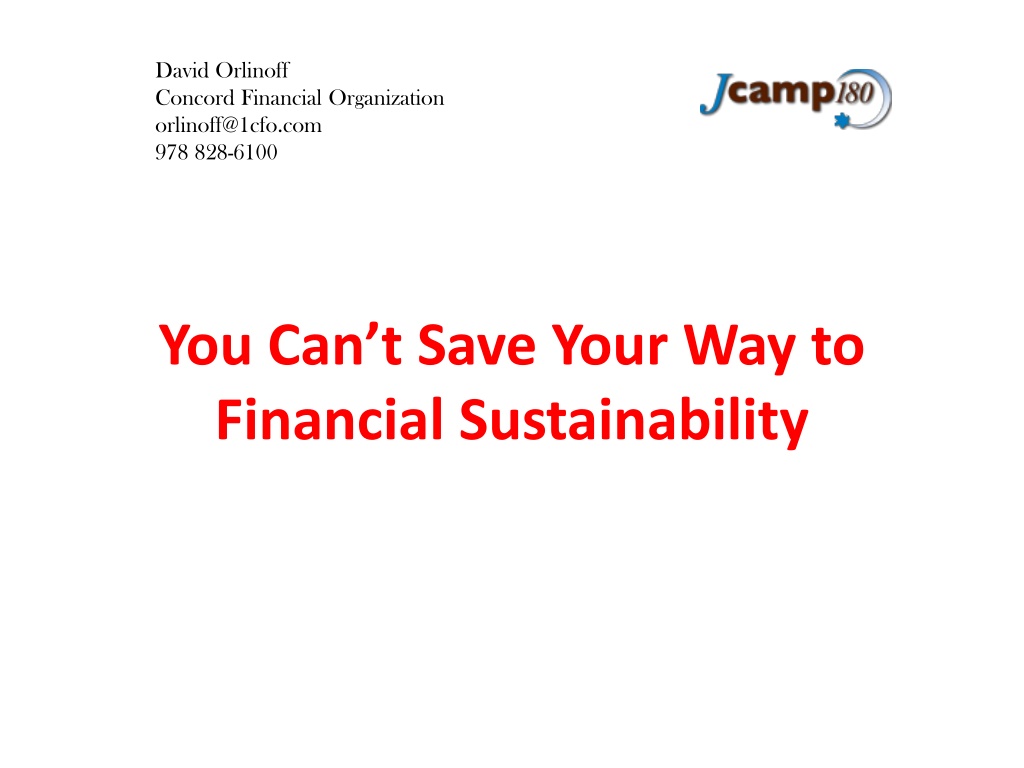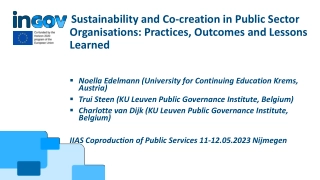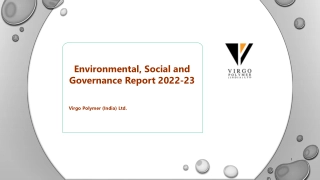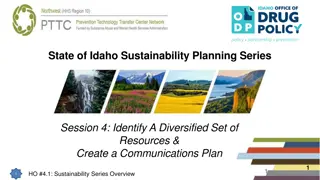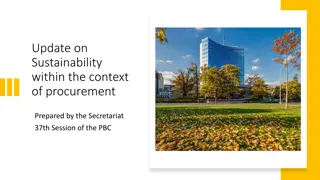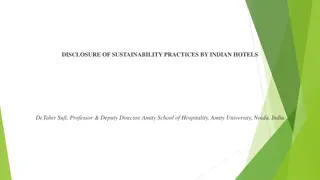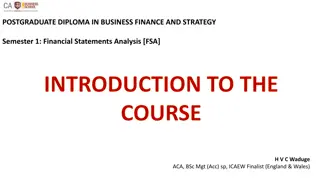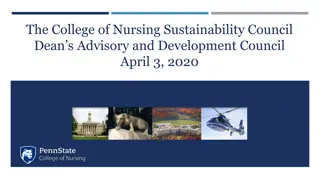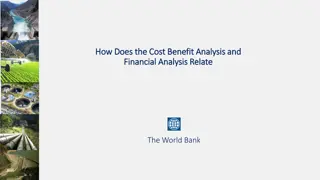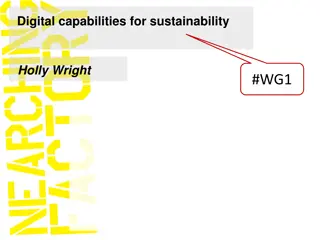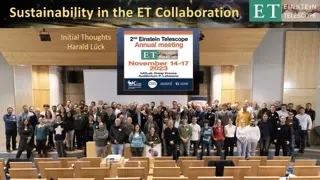Understanding Financial Sustainability in Organizations
Explore the concept of financial sustainability in organizations through discussions on revenue streams, expenditures, and long-term financial capacity. Learn about different income sources and how expenses are allocated. Discover strategies for achieving sustainable financial health.
Download Presentation

Please find below an Image/Link to download the presentation.
The content on the website is provided AS IS for your information and personal use only. It may not be sold, licensed, or shared on other websites without obtaining consent from the author. Download presentation by click this link. If you encounter any issues during the download, it is possible that the publisher has removed the file from their server.
E N D
Presentation Transcript
David Orlinoff Concord Financial Organization orlinoff@1cfo.com 978 828-6100 You Can t Save Your Way to Financial Sustainability
Agenda for this session: What do we mean by sustainability? What are the revenue streams that support our mission? What are the expenditures we incur in carrying out the mission? Questions/issues for discussion November 2, 2014 David Orlinoff, orlinoff@1cfo.com 2
A formal description of sustainability: An organization's long-term financial capacity is sustainable if its rate of change is sufficient to maintain assets at their replacement cost. A series of annual budget surpluses is key in achieving this target. Short-term sustainability emphasizes resiliency the availability to provide or obtain resources to deal with unexpected financial events. November 2, 2014 David Orlinoff, orlinoff@1cfo.com 3
A less formal description of sustainability: How far in the future do you see yourself sleeping well at night? November 2, 2014 David Orlinoff, orlinoff@1cfo.com 4
Where does our money come from? Nonprofit revenue streams fall into three broad classes: earned income, contributed income, and investment income. Earned income includes such categories as tuition and fees (net of scholarships) and event rentals. November 2, 2014 David Orlinoff, orlinoff@1cfo.com 5
Contributed income includes donations, grants, federation/JCC subsidies, special events, etc. Investment income includes interest on bank accounts and earnings/gains/ losses on endowment or similar assets. November 2, 2014 David Orlinoff, orlinoff@1cfo.com 6
Revenue distribution for a typical camp 20% 2% Earned income Contributed income Investment income 78% November 2, 2014 David Orlinoff, orlinoff@1cfo.com 7
Where does our money go? Most of our expenses relate to people Salaries and wages Taxes, benefits, workers comp Other big categories are facilities (operations and maintenance), food (less for day camps), transportation November 2, 2014 David Orlinoff, orlinoff@1cfo.com 8
If budget surpluses are a key to sustainability, how can we use our budget to help us? Let s make sure our budget shows forecasts for revenues and expenses by line item sets a profitability target for the year provides a basis for measuring results against the plan and for deciding on course corrections November 2, 2014 David Orlinoff, orlinoff@1cfo.com 9
The annual operating plan is also a non-financial document reflecting the organization s priorities. Priorities are driven by: Values Fit with long-term strategy And, of course, available resources November 2, 2014 David Orlinoff, orlinoff@1cfo.com 10
The key phrase here is available resources Resources are available only if you have control over money coming in or money going out Money coming in is fairly uncontrollable once the season starts Money going out is controllable only to the extent that savings decisions can be made in real time You also need to hold onto some of your money to reinvest in your physical plant, technology, and vehicles November 2, 2014 David Orlinoff, orlinoff@1cfo.com 11
Lets try a thought experiment Take a camp with a $2 or $3 million budget Roughly two-thirds of its expenses are people-related. How much can you save? All the rest of the expenses amount to about one-third of the total; food, maintenance, transportation, pro- gram expenses, and marketing are some of the big items and most are fixed or non-controllable. How much can you save? But if you can increase your philanthropic income (at a reasonable fundraising expense), how much more can you earn? November 2, 2014 David Orlinoff, orlinoff@1cfo.com 12
Base Budget 1,560,000 400,000 40,000 2,000,000 Cost-Saving Budget 1,560,000 400,000 40,000 2,000,000 Revenue-Building Budget 1,560,000 550,000 90,000 2,200,000 Earned income Contributed income Investment income Total support & revenue People-related expenses Other expenses Total expenses 1,330,000 570,000 1,900,000 1,265,000 540,000 1,805,000 1,405,000 600,000 2,005,000 Surplus/(deficit) 100,000 195,000 195,000 You can double your surplus if you can save 5% on your expenses, or if you increase revenue by 10% with a 5% increase in expenses. Which is more feasible, and which is more sustainable? November 2, 2014 David Orlinoff, orlinoff@1cfo.com 13
Questions/issues for discussion: What does your camp s revenue distribution look like (percentages from each major stream)? What is the growth potential of each stream? What steps would it take to increase each stream? What are the risks in each stream? What factors in the competitive environment affect your thinking? What factors in the Jewish environment affect your thinking? November 2, 2014 David Orlinoff, orlinoff@1cfo.com 14
What are the current trends in expenses? What steps can you take to make some of your fixed and uncontrollable costs more manageable? Do you have a contingency plan? Do you have a risk management plan? Do you have a disaster recovery plan? Do you have a good working partnership between board and senior staff? Finally, what keeps you up at night? November 2, 2014 David Orlinoff, orlinoff@1cfo.com 15
